There is little doubt that there are more exceptional trees than can be fit into a one acre garden, no matter how hard I might wish to include more. By complete accident, the design of this garden is now dominated by Japanese maples and flowering trees, with a few larger trees fit in along the edges. I claim that the over planting of trees was accidental, but perhaps unintentional is the better description, since the planting of the trees was not an accident. Certainly, I did not intend from the start to have a shaded garden dominated by small trees, but now there are only a few spots of sunlight remaining, and these will get smaller as the trees continue to grow.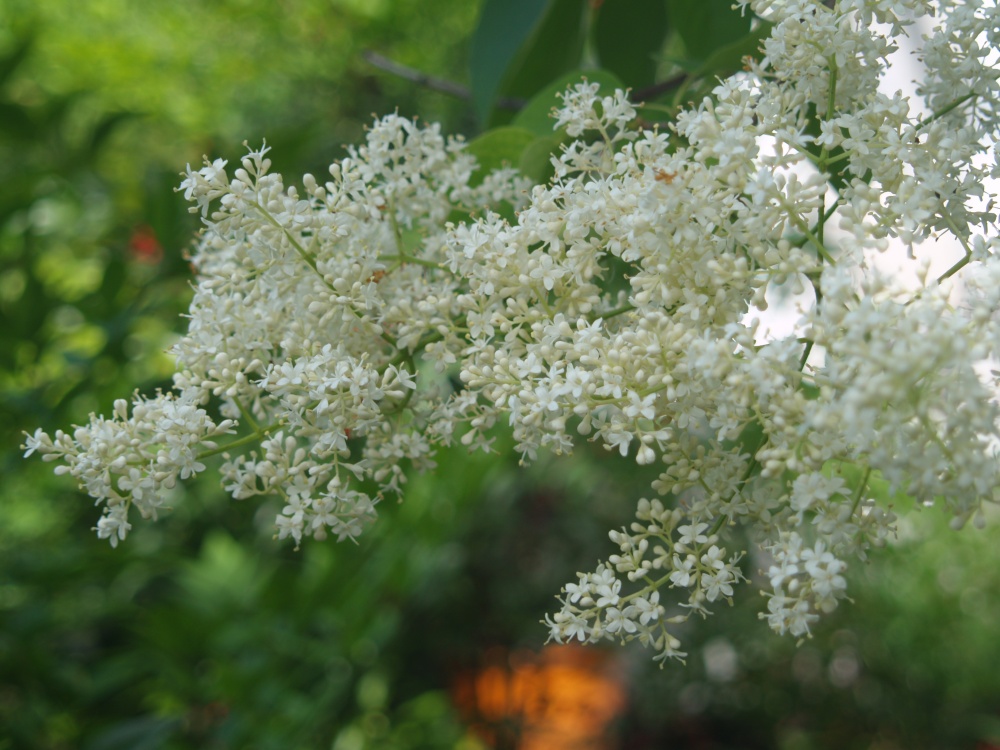
One year I foolishly planted the beautiful, yellow leafed cultivar of the native Black locust (Robinia pseudoacacia ‘Frisia’) in the rear garden. The mistake was not in selecting the locust, but in planting it much too close to an already established tree lilac (Syringa reticulata ‘Ivory Silk’, above). The locust quickly took to the spot, and before long branches of the two trees were entwined so that it was obvious that one or the other had to go. The locust was the smaller of the two, which proved to be the determining factor, since both are equally stunning trees. My consolation is that a few black locusts arch from the thicket that borders the garden, and the fragrant white, wisteria-like flowers (below) grace the neighborhood for a few weeks in May. So, I continue to enjoy blooms from both the lilac and black locusts.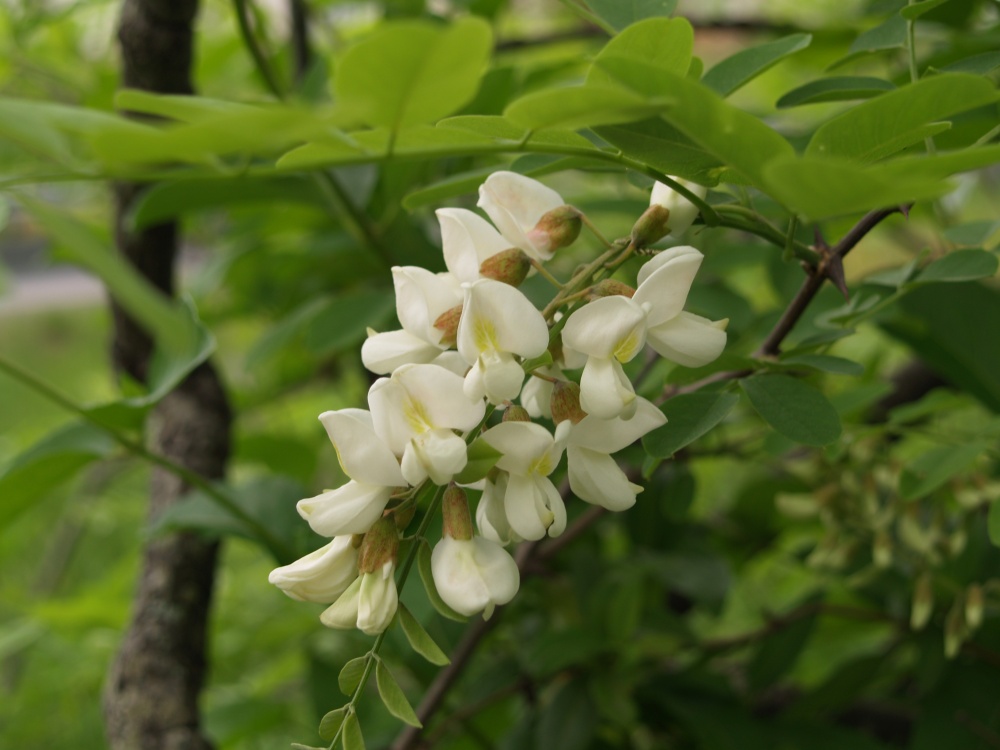
As is usual in the garden, planting one thing or another is often dictated by circumstances that are beyond the gardener’s control, and several trees have been planted as another has suffered from some catastrophe. In the past five years trees have been damaged by wind, ice, and snow, and selecting a replacement tree to fit into a nearly mature garden is even more of a challenge than planting with a blank slate. And, I’m not getting any younger, so I’m not likely to start with a bare twig of a tree with the hope that it will grow to fill the space before I’m dead and gone. I’m not patient, at least not when it involves trees. I’ve met gardeners who can point to the hundred foot fir in the backyard and recall when they planted it sixty years earlier. I don’t have that much time.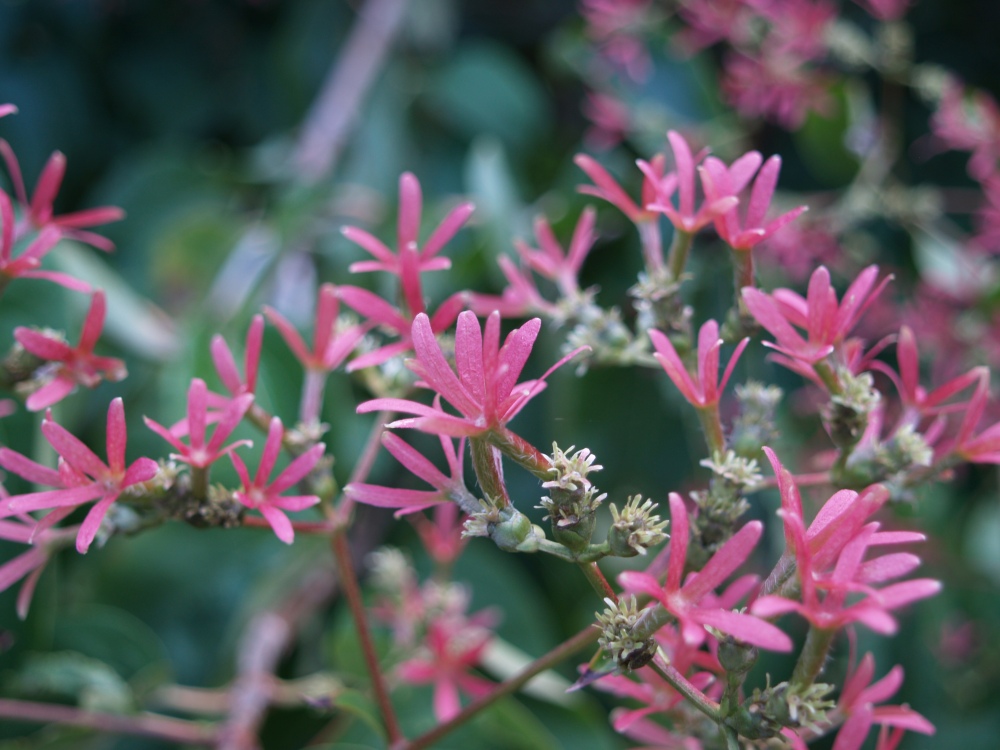
A few years ago a splendid multi trunked Seven Son Tree (Heptacodium miconioides, above) toppled over in a summer storm, snapped off at the ground in what’s called a down burst, but seems much like a small tornado when you’re watching out the back window as the garden is being torn to shreds. Since, I’ve lamented this favored tree often, and certainly I expected that this vigorous tree would immediately sprout a dozen new shoots. With undisturbed and extensive roots, I was confident that suckers would grow quickly, and my first thought was that the tree would be as good as new in a year, and by the second year I’d be pruning to keep it in bounds. But, there were no root suckers, not one, and very soon I had to consider alternatives. After much deliberation, I settled on the Red Horsechestnut (Aesculus x carnea, below), which I considered a satisfactory choice, but not ideal.
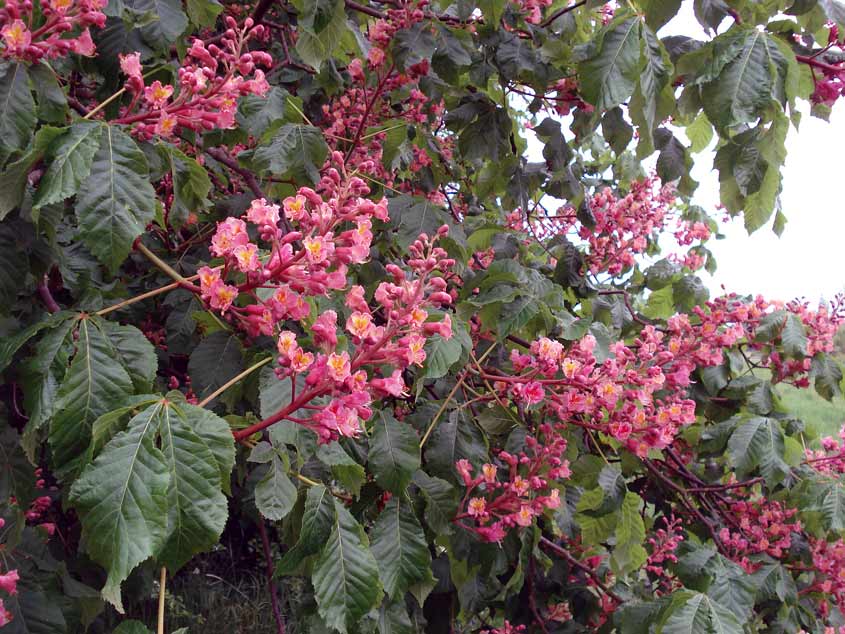
Was I wrong. The horsechestnut is a superb tree, at least the equal of any tree I could have possibly selected. The Seven Son was treasured for its late summer clusters of white flowers, and for colorful pink-purple bracts that followed the blooms into early autumn. Now, I’m hedging that the new tree might have a slight edge. The horsechestnut will grow a bit large for the area, particularly by comparison to the fifteen foot size of the Seven Son. But, the foliage of the horsechestnut is superior, and the flowers are marvelous. Though the tree is several feet short of making the impact for the space its in, I can imagine that my appreciation for it will only grow. But, with its larger size will come more shade in one of the few areas where sun loving perennials have thrived. Oh well, these choices must be made.
Next time – more catastrophes and more flowering trees.
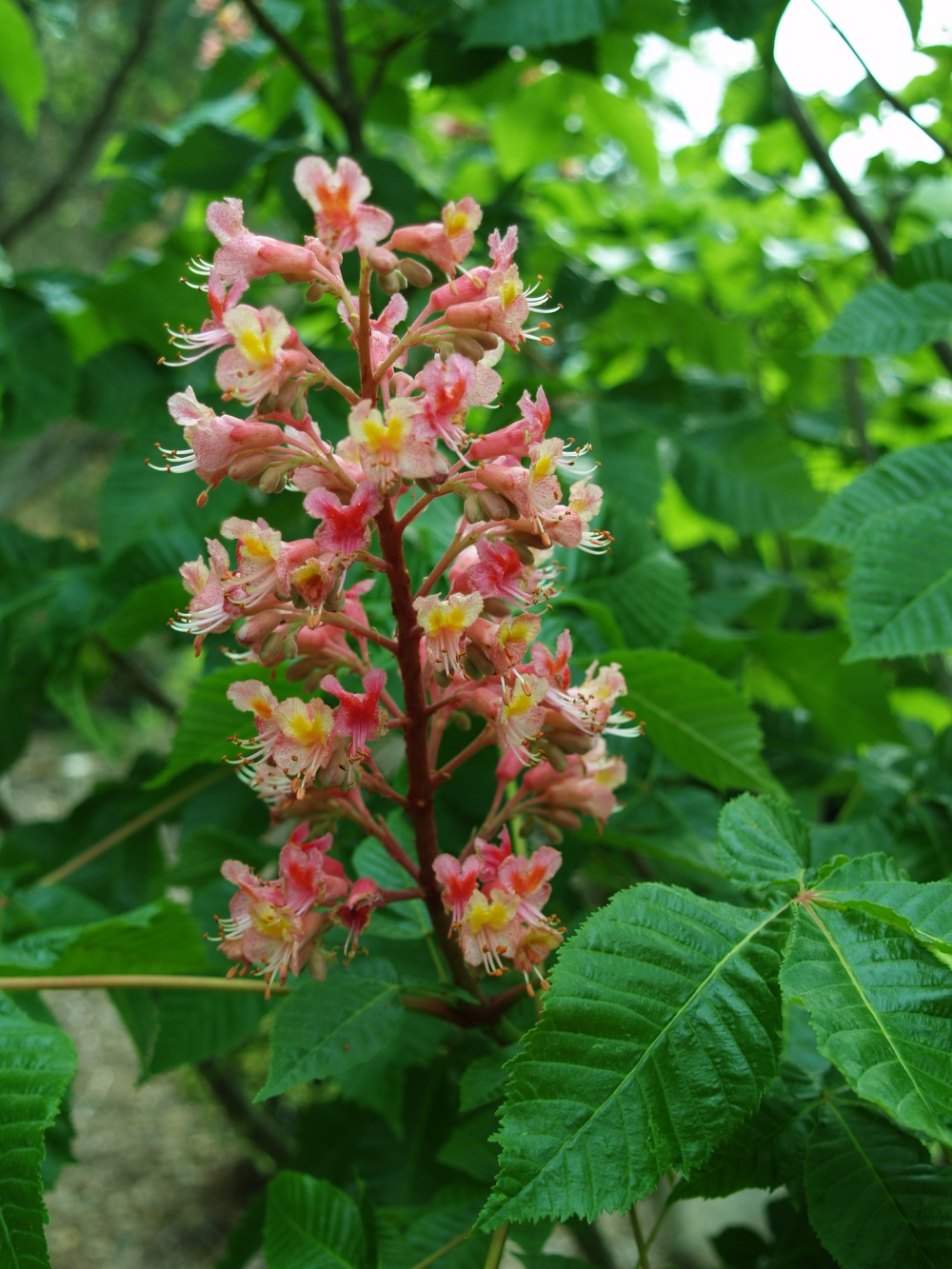
I totally agree that the Seven Sons tree and Red Horsechestnut trees are superb trees. I own both and treasure them. But I wouldn’t worry much about the Red Horsechestnut tree growing excessively large. They seem to be very slow growers and seem to top out at about 12 feet – at least around here in NH. Plus, in late summer, their leaves seem to get brown blotches due to some blight, which probably also limits their growth. But their blooms are unique and gorgeous.
If you want a fall-blooming tree, you could try a Franklin tree. I planted one years ago. It grew like crazy for about two years, and then over a period of weeks it died, due to verticilium wilt. Unfortunately, there is no cure for that disease, so I gave up on the tree.
I planted a Franklinia years ago, and mine is still going, though not vigorously. It occasionally loses a branch or two over the winter and after this winter it’s alive, but definitely not happy. Franklinia is well known for being finicky, so as a backup I planted a few Gordlinia, which are crosses between the southern shrub Gordonia and Franklinia. They’ve also had some dieback, but they’re leafing strongly now. The blooms are nearly identical to Franklinia, but a little larger. It appears Gordlinia will be a little more shrub like, and like the Franklinia there’s not a straight branch on the tree. But, I don’t think this would stand a chance up where you are.
I have quite a few perennials but my first love as a gardener are woody plants, which is why this is my favorite garden blog. So many others focus on herbaceous plants, so I appreciate your focus on trees (and shrubs). I have a very small garden but have managed to squeeze in a Forest Pansy redbud, a Chinese and a Cornell dogwood, a Japanese stewartia, two seven sons, four different Japanese maples, and a paperbark maple, along with a couple of conifers, mostly by not worrying how large they will be 20 years from now (or ten). I may even find room for one or two more if I give up on a lawn entirely, but I’m not sure what those might be. Any suggestions welcome!
I am onboard with eliminating all lawn, particularly in the rear garden, but I’ve been warned by my wife too many times not to eliminate any more grass. In fact, I hesitate to put his in writing, but last week I shaved off a foot or two of lawn to fit in another Floating Cloud Japanese maple where a winter damaged evergreen was cut out. I moved a few plants around to fill the space, and opened up the area slightly, so the total garden space was actually decreased.
Your photos are always gorgeous. Did your photography skills develop from your gardening passion? Do you use a DSLR? Thanks for the inspiration on both the gardening and photography fronts.
I don’t photograph anything except plants, and birds and bees that are visiting plants, so this is the only use I have for a camera. I use an older DSLR with relatively low resolution since most of the extra pixels are lost when moved onto the website anyway. Occasionally, I take a photo with my phone, which takes a fine photo except that it has a different depth of field than I’m used to.